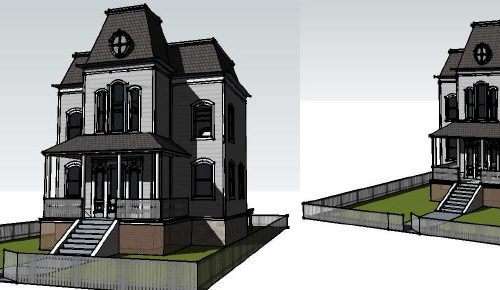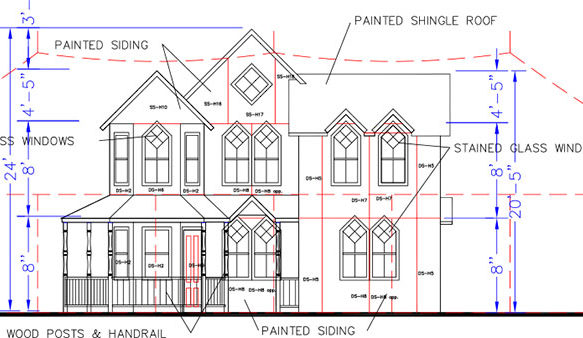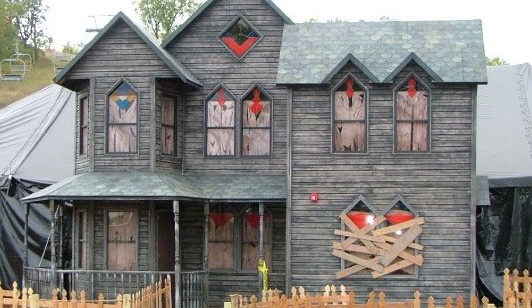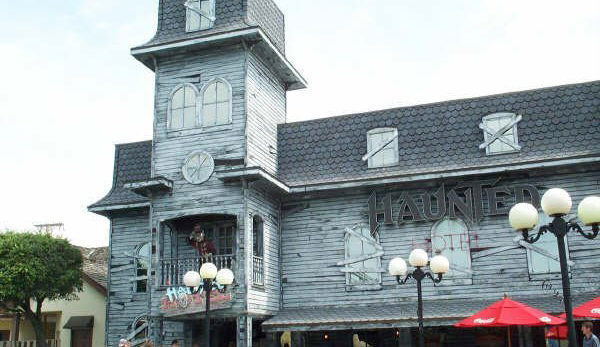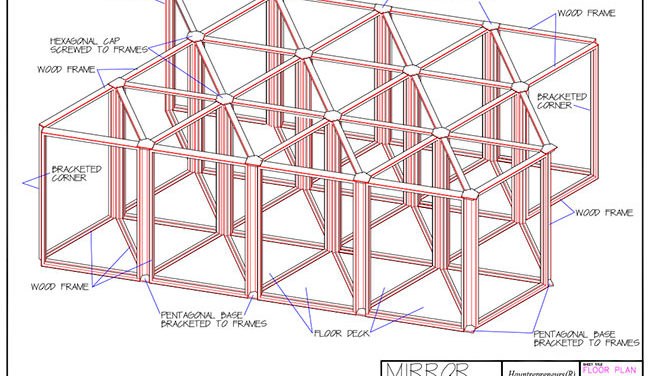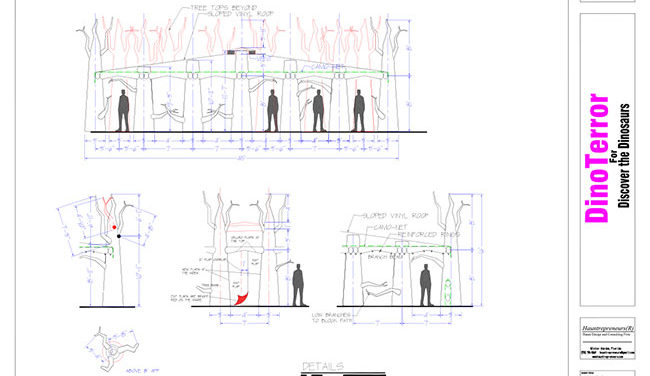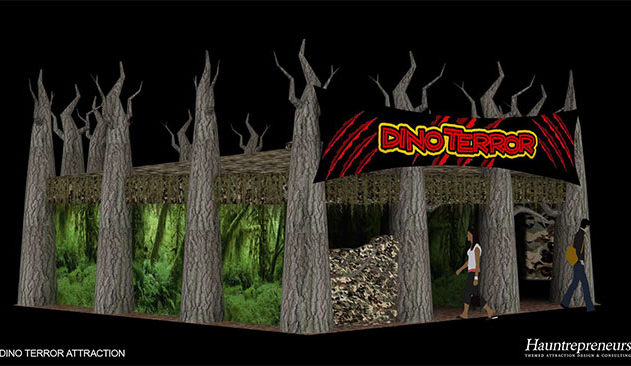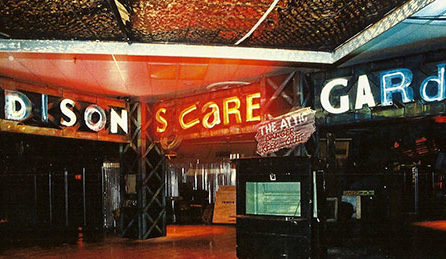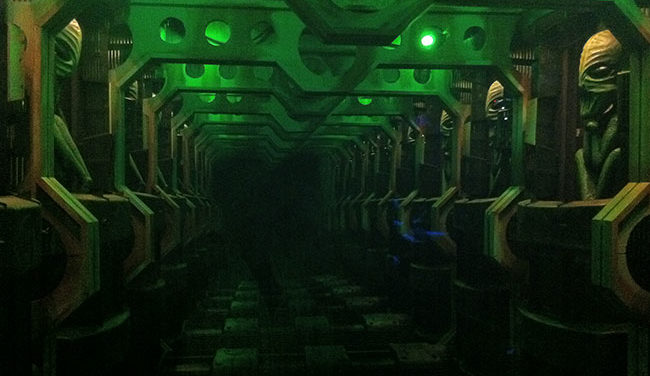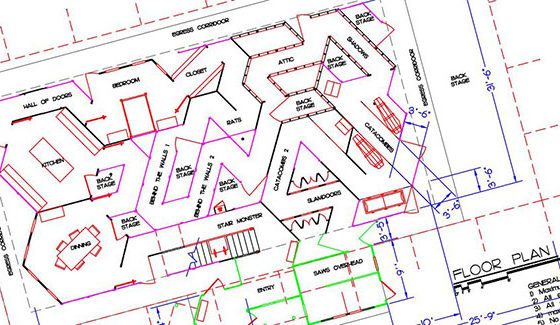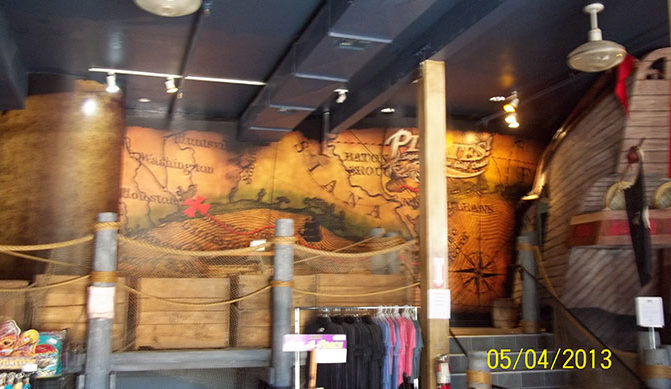Haunting “State of the Union”
By Leonard Pickel, Hauntrepreneurs Haunt Design and Consulting
Published in Parkworld Magazine in September 2010
The haunted attraction industry developed in the United States from single weekend church and civic fundraisers into a half billion dollar industry in only forty years. On the cutting edge of technology, haunted attraction designers are ever searching for new ways to illicit screams of terror and delight from their patrons. As sensibilities and what society deems acceptable changes, attraction designers are
forced to weave a daunting path through the limits of good taste while trying to create as terrifying an experience as possible within building/fire codes, insurance restrictions and common sense safety of patrons and staff.
The first October seasonal Haunted Attractions appeared across the United States around 1970 as fundraisers for church groups and charitable organizations.. Patrons paid a donation of $3- $4 to walk through an old house, church meeting room or school classroom decorated with frightening scenes and staffed with volunteers dressed in black robes and whiteface makeup. Some of these events became very popular and it was not long before entrepreneurs realized the profitability of these two to nine day events.
At first the for-profit haunted attractions donated partial proceeds to charities, but this gesture quickly died out The non-profit haunted house has all but disappeared from most cities due to the inability to compete with the advertising dollars that a for-profit event can pump into a market. Ever looking to increase profits, attraction owners started raising their prices and the attraction size. Haunted houses grew to massive forty and fifty thousand square feet single attractions, but there seemed to be an admission price ceiling of $15. People were not willing to pay more regardless of size.
Stumbling on to Halloween in 1973, Knott’s Berry Farm discovered the popularity of haunted houses and started cashing in on peoples love of being frightened. For an amusement park, a Halloween event drove patrons to the property during a month that historically had low attendance and it introduced new people to the parks amenities; promoting return visits in the summer. However, Knott’s did not have one single large area for their haunted house and instead created multiple attractions in smaller spaces that the park had available. A bumper car building, a large queue line area, or an arcade with the games removed became separate “mazes” filled with creepy sets and ghoulish characters. This multi-element approach smashed through the $15 ticket price ceiling and was quickly adopted by other Halloween events. Today, prices for independent haunted attractions range from $8 for a small single element attraction to $40 for a full blown multi-element event while amusement park Halloween events range from $40 – $70 for general admission.
Today there are between 2,000 and 3,000 independent haunted events in the United States every October. Many start up haunted events fail before year 3, but for every failure there is a new first time event opening to take its place. Haunting is a business like any other and the failure rate in the first five years exceeds the overall business average of sixty percent. Even with this high failure rate, some Haunted Attraction have been able to gain a foothold in their market and have been rewarded with attendances in excess of 50,000 people, (the industry average today is below 15,000 attendees per season).
Throughout its history, there have been Haunted Attractions that raised the bar of haunting in attendance, creativity, detailed realism or pure fright-factor. In the early 1980’s Joe Jenson operated Hades Haunted House in Chicago, Illinois. In its prime the event was host to fifty thousand people in only 10 days of operation and due to noise restrictions had to close at 10 pm; a record for independent attendance vs. hours of operation that stands to this date. Rocky Point Haunted house in Salt lake City, Utah was a massive attraction that not only had movie quality sets, costumes and makeup, but was filled with sets, props and costumes from major motion pictures. Owned by Cydney Neil, this attraction was spotlessly clean and the volunteer acting troupe was second to none. The Spanish company, Monsters International, put the United States haunt industry on notice in 1991 with Terror on Church Street in Orlando, Florida. An attraction with great sets, great actors typical of an October style haunted house, but this was a year round haunted attraction; a business plan that had not previously been attempted in the United States. The first haunted event to utilize celebrity appearances to drive attendance was David Bertolino’s Spooky World near Boston, Massachusetts. What started out as a single haunted hayride evolved into the largest attended, independently owned, multi-element Halloween event in the country before its demise in 2004.
Sadly, each of these legendary attractions went out of business; some due to retirement of the owner, some to increased code restrictions and some to poor business decisions. However, other attractions have taken up the banner and continue to push the art form even farther. Netherworld in Atlanta, Georgia, 13thGate in Baton Rouge, Louisiana, House of Shock in New Orleans, Louisiana, Erebus in Pontiac, Michigan, the Dent School House in Cincinnati, Ohio, House of Torment in Austin, Texas and the Darkness in St. Louis, Missouri are leading the haunted industry in high detail, layered theme, and amazing actors in great costumes and makeup. The top United States amusement park event is Halloween Horror Nights at Universal Studios, Florida, with a full time, year round staff devoted to creating the most imaginative and frightening attractions, with new and different themes each year.
Halloween in its present form is a truly American holiday, but haunted houses and amusement park Halloween events are appearing around the globe. Both Ocean Park and Disneyland in Hong Kong are offering frightening Halloween events with haunted attractions too intense for children. Something the Disney parks are not even doing in the states.
England seems to be where haunting is getting the strongest foothold. One of the first to see Halloween’s potential was Stuart Beare of Tulley’s Farm in Sussex, who has been experimenting with various forms of scare entertainment since 1994. The farm’s Shocktoberfest event is one of the largest and most elaborate seasonal events in the UK offering both daytime and evening attractions. At Warrington in Cheshire, Spooky World offers attendees a seasonal fright as do Frightmare in Gloucester, and Farmageddon in Ormskirk, Lancashire. UK amusement parks are also getting into Halloween. The Alton Towers’ event called Scarefest and the Thorpe Park, Fright Nights event have been operating since 2002. Crealy Adventure Parks entered the scare entertainment world in 2008 with Hallow Scream. Even some of the castles in England are operating Halloween events on property. Not to mention the recent explosion of year round haunted attractions in and around London.
With any type of amusement, there is a fine line between entertainment and insult, and haunting is no exception. People are very easily offended and this can tie the hands of the attraction designer looking for the latest greatest cutting edge scare tactic. For instance, scenes with hangings have been a touchy subject in the states lately, and beheadings would also be inappropriate for the scary times we live in. Devil worship is a subject I have personally always steered clear of, but the House of Shock mentioned above, took exactly the opposite approach. They embraced the worship of Satan as the theme to their entire event, shot 30 foot flames off a preshow stage emboldened with a pentagram. Needless to say, the event and its owners received the wrath of everyone… everyone except the attendees who came in huge numbers to see what all the buzz was about.
As haunt designers look for the next best scare, they are quick to adapt new products and new technologies even if they were not intended for haunting. Alginate used for dental impressions is used to cast human body parts for props. Cromadepth 3D glasses are used to hide actors from unsuspecting patrons. LED lighting provides just enough illumination on what the designer wants to be seen without destroying the suspension of disbelief with a large light fixture. Even computer generated effects are being used with flat-screen televisions for changing portraits or views out a window. Video projections of live rats or roaches on a wall can creep out even the bravest amongst us, and robotic creatures using computer controlled motions are setting the stage for an incredible future for the haunted attraction industry.
The popularity of Haunted Attractions shows no sign of fading, with more and more large scale Halloween events continuing to open across the United States and around the world each year. As new technologies are developed, they are quickly adapted or even hacked into a tool for the haunted attraction designer. The industry is safer than it has ever been with more and more attractions being forced to comply with strict code restrictions on what can and cannot occur in such occupancies. While subjects once thought to be “taboo” are being explored by haunters looking for the next great scare!
Leonard Pickel is Owner of Hauntrepreneurs(R), a Dark Design and Consulting Firm, Founder of Haunted Attraction Magazine, Owner and Creator of the Haunted Attraction National Tradeshow and Convention, (HAuNTcon), Partner of Findahaunt.com Haunted Attraction locater. Leonard is available for consulting, Haunt design, permit drawings and lectures, (like the one above). Contact him at 972-951-5100 or via email at hauntcon@gmail.com
